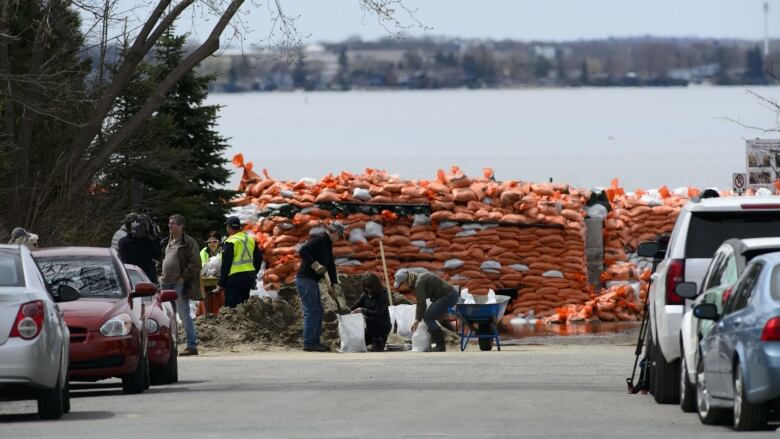2nd peak unlikely, river regulator says
Ottawa River Regulation Planning Board controls flow from northern reservoirs

The Ottawa River is unlikely to see a second peak near the capital thisspring, according to the agency that regulatesreservoir levels along the river basin.
We're absolutely realizing we don't want to exacerbate downstream flooding.- Michael Sarich, Ottawa River Regulation Planning Board
Earlier predictions warned of a second peak similar to the 2017 floods, but Michael Sarich,a senior water resources engineer with the Ottawa River Regulation Planning Board, said he expects the river to begin subsiding albeit slowly after this week's initial peak.
"It's highly unlikely that we could re-achieve these high levels on the lower sections of the basin because we've pretty well exhausted the snow melt potential in those sectors," Sarich said, referring to portions of the river downstream from Pembroke, Ont., including Ottawa.

More water up north
The rising flood waters currently threatening the capital flowed into the Ottawa River from southern tributaries swollen by a thick, melting snowpack and heavy spring rain. While most of that snow is now gone, there's more to the north, andreservoirs there arefilling fast.
"The reservoir storage is finite and there is a lot of snow in the northern region," Sarich said.
In 2017, a second peak occurred after those reservoirs were opened into the Ottawa River. Sarich believes this year, the board will be able to open them more gradually, slowing the spill downstream.
If everything goes according to plan, water levels won't rise, but they will take a long time to subside.
"It might be uncomfortably high for quite a period of time," Sarich said.
Complex calculations
The board releases two forecasts each day predictingwater levels and anticipating peaks at key points along the river basin, including Ottawa.
Hourly calculations based on data collected at numerous monitoring stations determine precisely how much water is discharged from the northern reservoirs.
"We're observing how quickly these downstream flows are decreasing," said Sarich. "We're absolutely realizing we don't want to exacerbate downstream flooding."
Of course, even the most careful planning can be thrown off by Mother Nature.
Heavy rain or snow, such as that predicted for Wednesday,or a quick rise in temperature up northwhere snow is still being "measured in metres" could wreak havoc, Sarich said.
"Everything is in flux, and every day is a new portrait."
Contrary to rumour, Sarich said the interests ofhydro-electric companies don't come into play when the board decides how much or how little water to release downstream.
"Under high water conditions, no one makes power," he said.
Sarich said during a flood the water at the top of the dam is lowered to prevent communities upstream from flooding. As a result, the water at the bottom of the dam is higher than normal and it disrupts the normal cycle of electricity production.
with files from Ryan Tumilty/CBC












_(720p).jpg)


 OFFICIAL HD MUSIC VIDEO.jpg)
.jpg)



























































































